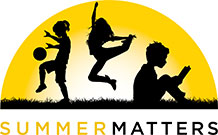21st Century Community Learning Center (21st CCLC)
Information about the Cohort 10 Elementary/Middle School Request for Applications
This memo describes the 21st Century Community Learning Center (21st CCLC) request for applications (RFA) for elementary and middle school students. It is intended to provide updates about the new RFA and as an application planning tool that can be shared by teams, potential partners, and stakeholders. This document is not produced by the California Department of Education (CDE), so details should be verified in the official RFA that can be found here.
What is 21st CCLC Funding?
The 21st Century Community Learning Centers program is funded by the U.S. Department of Education and administered by the California Department of Education (CDE). CDE issues two separate applications for five-year grants serving elementary/middle schools (21st CCLC) and high schools (ASSETs) respectively. This memo describes the elementary/middle school funding.
- The funding is for communities to establish or expand activities that focus on improved academic achievement and enrichment services that complement the academic program.
- Funding is available for before school, after school, and summer. An optional supplementary grant is available for ensuring equitable access (transportation) to the programs.
- Eligible applicants partner with Title 1-eligible schools, and can include cities, counties, local educational agencies (LEAs), community-based organizations, public or private agencies, or a consortium of two or more of these agencies.
- Grant amounts are calculated at $7.50 per child per day for after school programs, up to a total of $112,500 per elementary school site, and $150,000 per middle school site.
- Summer grants are calculated at $7.50 per child for 3 hour programs or $15 per child for 6 hour programs, up to a total of 30% of the after school base grant.
In Cohort 10, there is about $15 million available for elementary/middle school programs. The process is extremely competitive with only 10% of applications being funded in Cohort 9.
Application Due Date: December 21, 2016 at 5:00 pm
Initial Award Notification: April, 2017
For additional information, go to http://www.cde.ca.gov/ls/ba/cp/funding.asp.
What’s new in the Cohort 10 Elementary/Middle School RFA?
CDE made some significant changes in this RFA, based on state and national laws and on the adoption of California’s Quality Standards for Expanded Learning (Quality Standards). Here’s what to look out for:
Priority Points:
Funding priority is determined by individual school site, not for the application overall. (RFA p.9, 32)
New priority points are given for school sites proposing:
- Year-round programming that includes both after school and summer. The application can be written for both components or to add summer to an existing 21st CCLC or ASES-funded after school program (or after school to an existing summer program.) (p.6, 33)
- Renewal of an expiring Cohort 7 21st CCLC grant if the program has met grant requirements. (p.33)
- Programming at school sites determined by the LEA to be in need of intervention and support. This priority point used to be available only for schools officially designated in “program improvement.” (p.32)
Review Process:
In the review process, applications go through 3 levels of screening: (p.8-9)
- Level 1 – Quality: Does the application describe a quality program at each school site? The narrative questions and rubric are aligned to the 12 Quality Standards and must meet “Sufficient,” “Comprehensive,” or “Outstanding” quality to move forward for consideration. (p.3, 37, 46)
- Level 2 – Priority Points: For applications that pass the quality screen, how many of the 6 possible funding priority points are met at each school site?
- Level 3 – Free and Reduced Price Meal (FRPM) percentages: Among school sites with equal priority points, grants will be awarded based on FRPM percentages.
Eligibility for Summer-Only Applications:
When adding summer to an existing after school program, the grantee no longer has to be the same entity as the one that holds the existing after school program grant. The application must identify the existing after school grantee that the summer program will be partnering with to provide year-round programming. (p.7)
Matching Funds
- The matching fund requirement now ranges from 0 to 30%, depending on a school’s FRPM. (p.16)
- There are no longer limits on the percentage of matching funds that can be in-kind. (p.16)
Family Literacy and Equitable Access:
There is no longer a separate grant for family literacy, but there is still an equitable access grant that can be applied for in conjunction with an after school grant (p.7)
For additional information, go to http://www.cde.ca.gov/ls/ba/cp/funding.asp, or contact the CDE help desk at 916-319-0923 or expandedlearning@cde.ca.gov (subject line: 21st RFA Question)




